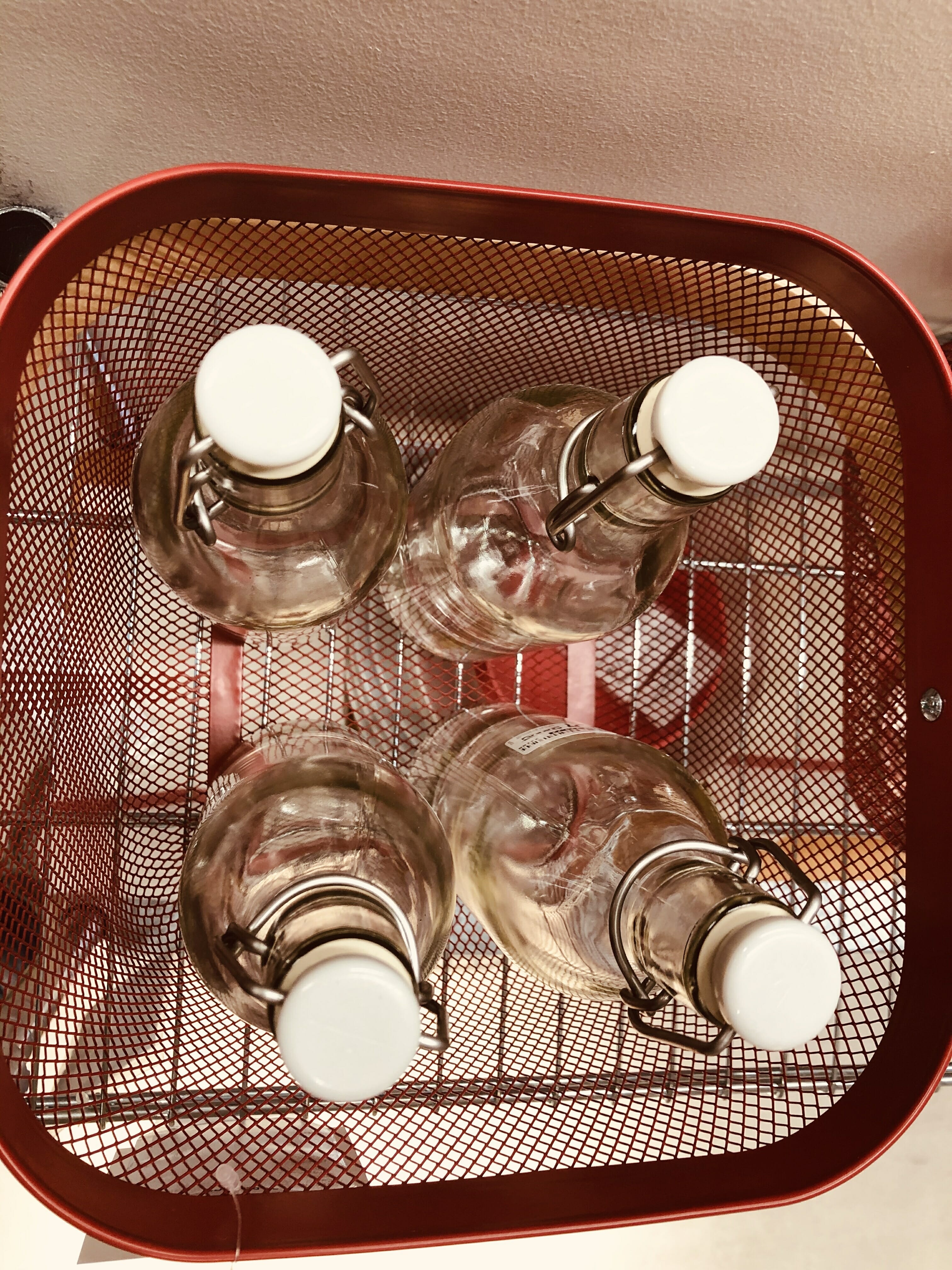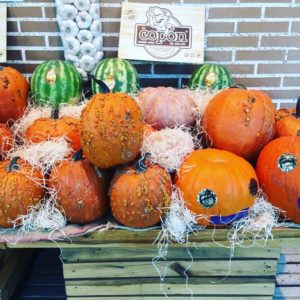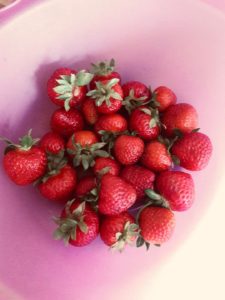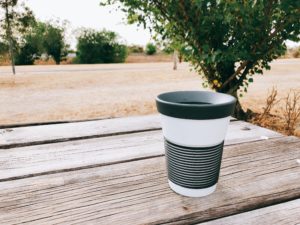Eco-Friendly Meal Prep Ideas

Recently and very luckily, being eco-friendly has evolved into a long-needed zeitgeist. Fridays for Future, plastic-free, zero-waste and minimalism just to name a few.
The good news for the fellow meal preppers is, that cooking your food at home is a great first step in the quest to be more environmentally friendly. However, there’s always more you can do! Let’s take a closer look on the potential environment sins in meal prepping and some steps that you can easily incorporate into your meal prep routine.
Minimize food waste
Plan your meals. Having a rather rough or more detailed idea of what you want to eat during the week will make your life a lot easier. You can use my Vegan Meal Prepper Meal Plans or draft some on your own. When you go with your own plans, it pays off to have a handful of tried-and-true, family favorite meal prep ideas. No need to reinvent the wheel each week, which would lead to decision fatigue no one really wants. Also if you have followed my Vegan Meal Prepper Meal Plans for a few weeks you will load up on a bunch of new and easy to follow recipes – I’m sure! If you only shop what you need, you will keep your food waste to a minimum.
Buy locally
When you buy local, you are buying products that were not shipped in from some remote part of the world. Shipping such products to you emits lots of eco-hostile climate gases into the air and waste precious natural resources. Many products or their local “sibling product” are made or harvested near you, which helps to eliminate the issue. Which brings me right to my next point:

Buy food in season
If you’re spending money to buy products that are out of season and grown distant parts of the world, you are encouraging products to be shipped over long distances. Eating food that it is season doesn’t have to be boring. The produce you’ll use will be more limited, but the source of great recipes you’ll find online is basically unlimited. For example, there is a crazy amount of vegan kale recipes (winter vegetable) that you could have a different meal with kale until the day you die.

Skip the thin plastic bags for fruit & veg
While many people have managed to bring their own tote bags to transport their groceries home, those rolls of thin, clingy plastic bags in the fruit and vegetable aisle that are meant to hold things like asparagus, lettuce, and apples remain an important piece of plastic. I admit: in my life, too. In many places, these plastic bags aren’t recyclable because they gum up the works of the recycling process by being so flimsy. It’s my New Year’s resolution happening NOW to give them up. I bring my own tote bag for check-out and I’ll bring reusable mesh bag (affiliate link). Why don’t you try that too?
Abandon the single use plastic
I must admit, I’m a big fan of Ziplocks and the like. I use cling wrap when I need to and freezer-bags to freeze loose items and liquidy things like stews and soups. BUT, I’m committed to a much more plastic-free kitchen. Therefore, I got a few things that will make it work such as
- Silicone Stretch Lids,
- Metal Drinking Straw and
- Reusable Silicone Food Storage Bags (affiliate links)
Freeze leftover food if you cannot eat it within 4 days
Leftovers can be kept for three to four days in the refrigerator. Be sure to eat them within that time. After that, the risk of food poisoning increases. If you don’t think you’ll be able to eat leftovers within four days, freeze them immediately. See my meal prep safety guide for more information.

Compost what food you can’t eat
Composting is an eco-friendly alternative to throwing items in the trash—you not only reduce landfill waste but also gain a nutrient-rich fertilizer for your garden. Once you get into the habit, it’s actually easy to compost. There is even indoor solutions (affiliate link) if you don’t have a backyard.
Share food instead of throwing it out
In many places, food savers have somehow connected to minimize food waste. As for Germany, foodsharing.de enables individuals to share food, whilst also allowing volunteers to pick up food from businesses to distribute it through public storage places. There are also many co-operations with local supermarkets or bakeries, or chains or ways to connect with other food savers directly (such as on Facebook). Why not share that bunch of bananas you bought that is going brown to quickly with your neighbor today and get his leftover apples tomorrow?
Save food that others would toss
I don’t want to bore you with statistics and I’m sure we all know that the developed world wastes insane amounts of food each year. It is clear that we can all make a difference in the way we shop and eat. And, thanks to technology, sustainable eating can be more straightforward than it has been before.
For example, I use an app called togoodtogo.com that lists local restaurants, fruits and vegs retailers and supermarkets that offer surprise packages of leftover food at a great price. Of course, it’s a limited supply only, so I try to be quick to get my hands on some fruit & veg on Saturday. I usually use them all in smoothie prep packing. That way, the entire family can easily have a smoothie whenever they crave one. And since it’s a surprise package, more often than not do I get produce that I wouldn’t normally buy. In other words, it’s great to bring some variety into your diet.
Get a case and carry your own spoon, fork and knife with you
We all know these days. We have to stay late at the office and grab a snack from the supermarket next door. Or we go out for a Saturday walk, meet a friend and decide to do a spontaneous picnic. Plastic cutlery will be purchased, used a single time and be tossed.
I’m sure you’re aware of it, but I’ll point it out to you just in case: The Ocean Conservancy lists cutlery as among the items “most deadly” to sea turtles, birds, and mammals, and alternatives have proven particularly difficult to come by, though not impossible.
Let’s all get on board on the BYO cutlery movement and simply carry your own knife, fork and spoon with you. A chic case will reduce the stares you’ll get for doing it and – who knows -maybe you’ll meet a fellow BYO cutlery boy who turns out to be the love of your life. If carrying your own fork, knife and spoon seems to much clutter for you, why not try an All-in-One Solution like this Spork (affiliate link)
No more coffee to go single use cups
A recent study showed that in Germany alone, consumers use 2.8 billion disposable cups per year for hot beverages, an equivalent of 23 cups per person. The cups and lids often end up in the environment shortly after use because they are discarded carelessly or fall out of overflowing waste bins.

Use mason jars
Mason jars have seen quite the surge in popularity over the last few years. And the newest sweethearts of the DIY online community aren’t just a new item in creative home decoration and kitchen staple – they’re perfect sustainable solutions to many of life’s little plastic hangups.

- To-Go Smoothie Cup
- Salad Dressing Shaker
- Juice Shaker
- Cocktail Shaker for the unprofessional cocktail-on-the-couch-night
- Coffee To-Go Cup
- Drinking quietly at night cup (If you have a noise sensitive husband or baby sleeping next to you, you’ll appreciate a large, zero-noise cup)
- Cereal Bowl
- Overnight Oat Bowl
- To-Go Salad Container – remember the simple rule to keep things fresh: Dressing on the bottom, delicate greens on top)
- Snack Container – energy balls, trail mix, celery sticks all go in perfectly.
- Storing Meal Preps and Leftovers
- Storing staple foods – dried lentils, beans, rice, flour – everything really.
Remember: We are living on this planet as if we had another one to go to.
Recent Comments